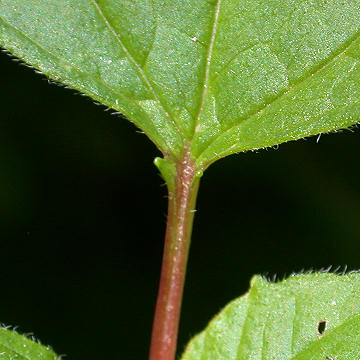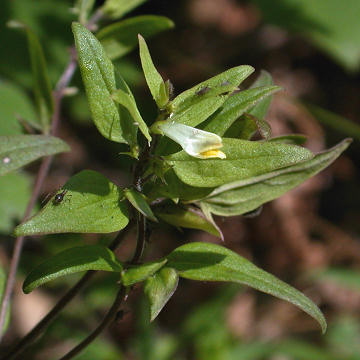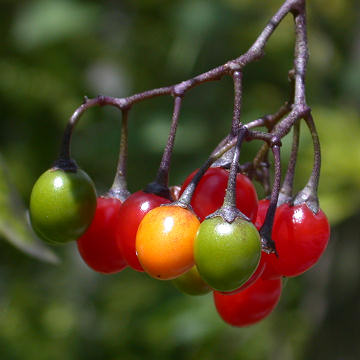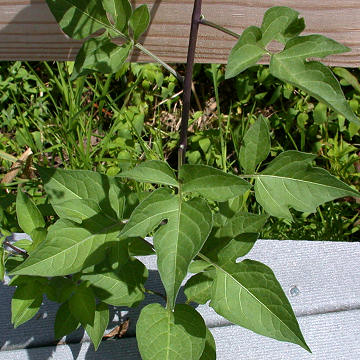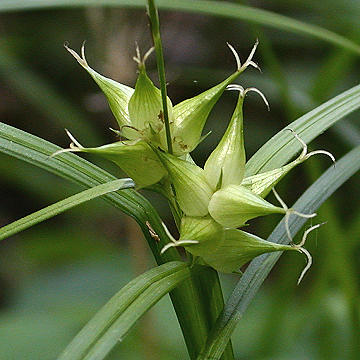There are two main taxa of Highbush Cranberry found in the U.S., one native to Europe and the other to North America. The European Highbush Cranberry (Viburnum opulus) has naturalized throughout the northern half of the U.S. and is most easily identified by the presence of distally depressed (cup-shaped) petiole glands. The fruit of this species is unpalatable and mildly toxic.
The American Highbush Cranberry is sometimes treated as a variety of Viburnum opulus (V. opulus var. americanum) or as a distinct species (V. trilobum). Rather than being cup-shaped, the petiole glands of this shrub are club-shaped or columnar. In addition, the leaves often have short sparse hairs above and the lobes tend to be narrower. While the European Highbush Cranberry can be found in a variety of shaded habitats, its American counterpart is mostly restricted to rich woods or the edges of marshes or swamps. It has fruit that is sour but considerably more palatable than the European variety.
American Highbush Cranberry seems to be much less common in many parts of North America than the European. I have come across dozens of specimens in the wild in the last few years and none of them have been native. Then last week I found some native Highbush Cranberry on a research plot in the Tug Hill region of NY. The habitat was a reverting field at the edge of a marsh where the water table was very close to the surface. Here are some pictures.
Overall habit

Leaf shape
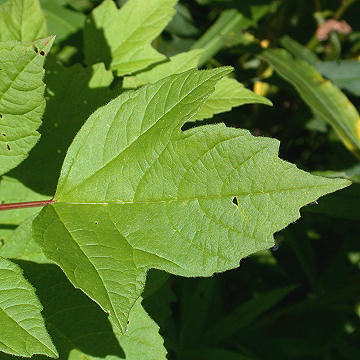
Petiole glands

Hairy margin
